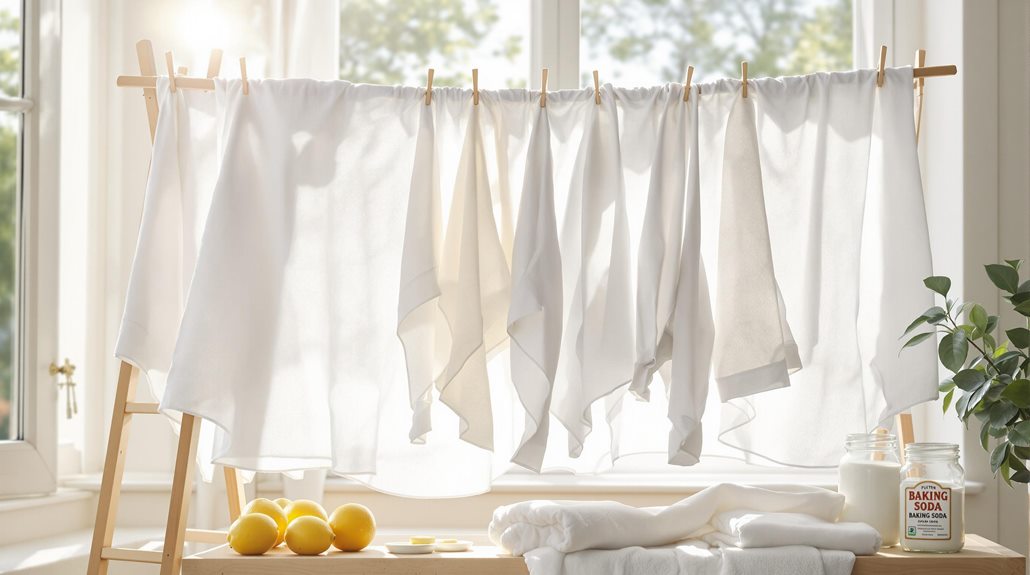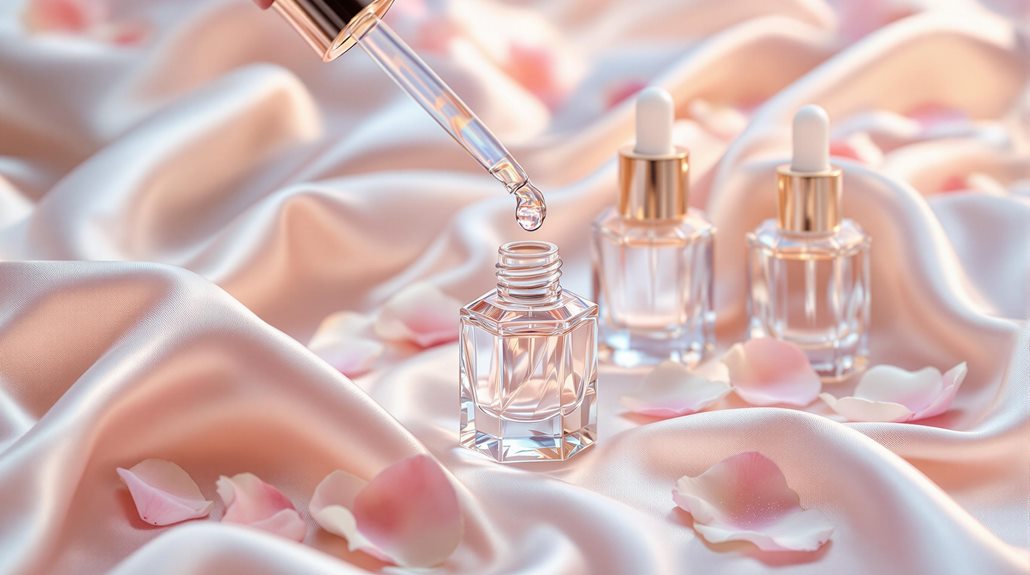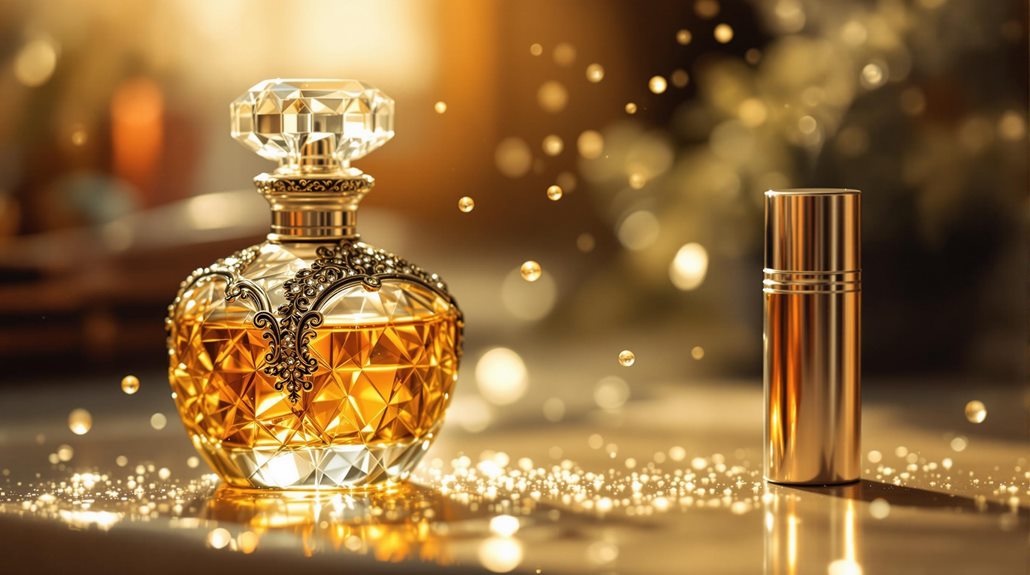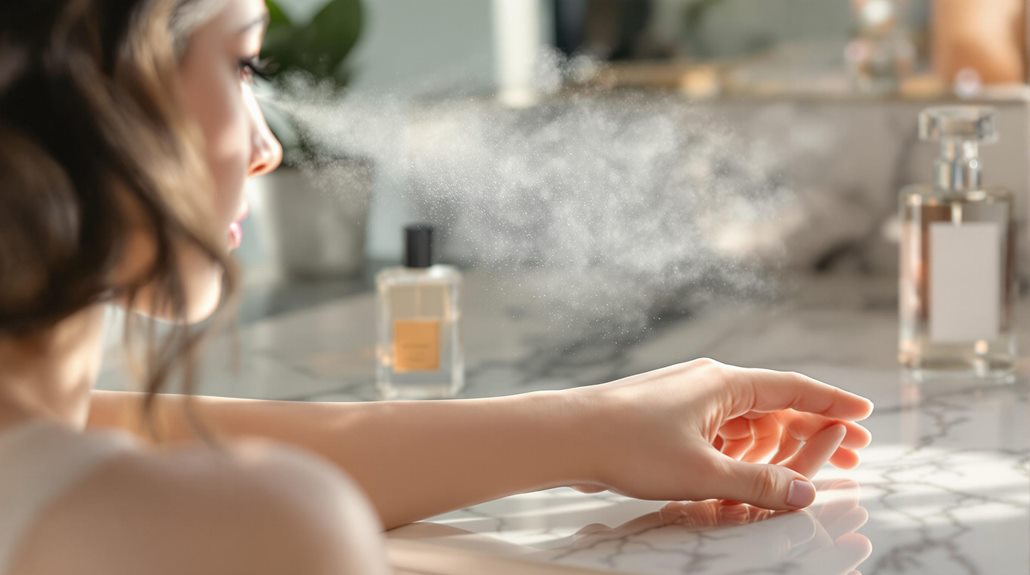Exploring the Fragrance World: How Many Perfume Brands Are Out There?
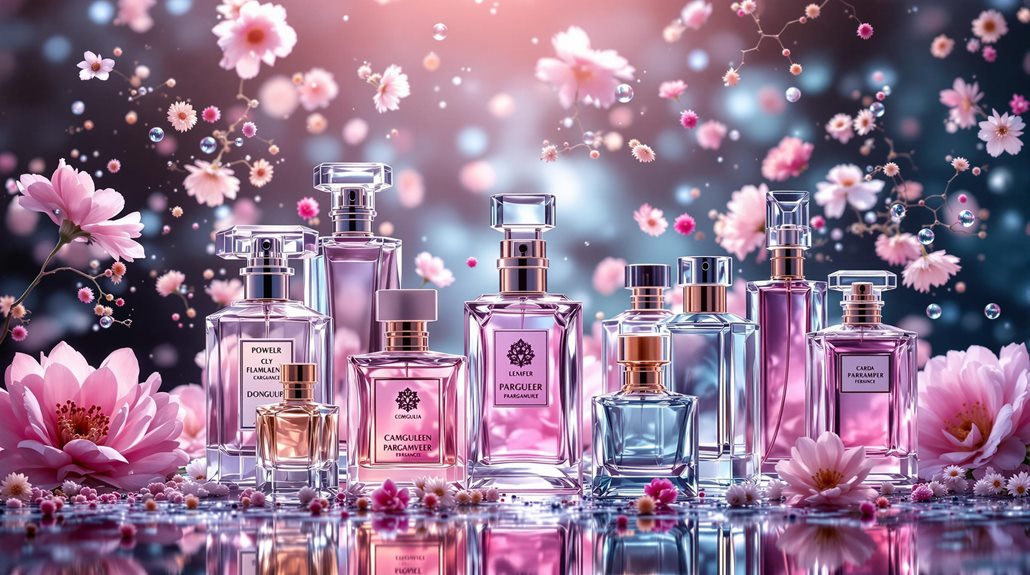
The fragrance world features over 2,000 perfume brands, from iconic luxury houses to innovative startups. You'll find established names like Chanel and Dior setting industry standards alongside emerging direct-to-consumer brands like Scentbird and Skylar. The market spans premium, mass-market, and niche segments, with premium fragrances ($50-$100) dominating 40% of global sales. Today's perfume terrain includes traditional boutique perfumeries, mass-market producers, and digital-first brands using AI-driven personalization. Whether you're drawn to classic luxury or sustainable newcomers, the fragrance industry's $52.4 billion market offers countless options to uncover your signature scent.
Global Fragrance Market Size
The global fragrance market continues to experience substantial growth, with its value reaching $52.4 billion in 2020 and projections showing an increase to $60.13 billion by 2024. This steady expansion is reflected in the compound annual growth rate (CAGR) of 2.79% expected between 2024 and 2029, demonstrating the industry's resilience and consumer demand.
When you look at the market size breakdown, you'll find that non-luxury fragrances dominate the global perfume terrain, projected to represent 72% of total sales by 2024. The United States stands as the market leader, with anticipated revenue of $8,862 million in 2024, highlighting its significant influence on the industry's direction. The worldwide per capita revenue in the fragrance market is set to reach $7.76 in 2024, indicating consistent consumer spending on fragrances across different regions.
Major industry players shape this expanding market, including influential suppliers like Givaudan, Firmenich, IFF, and Symrise, alongside established brand manufacturers. These companies contribute to both luxury fragrances and mass-market segments, ensuring diverse product selections that cater to various consumer preferences and price points.
Leading Luxury Perfume Houses
Within the luxury fragrance market, several prestigious houses have established themselves as undisputed leaders, with Chanel, Dior, Estée Lauder, Hermès, and Gucci commanding significant market share. These iconic brands have built their reputations through decades of crafting exceptional perfumes that capture the essence of luxury and sophistication.
- Chanel's signature No. 5 fragrance remains one of the most recognizable and best-selling perfumes globally
- Dior's diverse portfolio includes popular fragrances like Miss Dior, J'adore, and Sauvage
- Estée Lauder's Beautiful and Pleasures have become staples in the luxury perfume market
- Hermès offers sophisticated scents like Terre d'Hermès and Eau d'Orange Verte
- These brands consistently set industry standards for quality and innovation
When you're exploring the world of luxury fragrances, you'll find that these leading houses have immersed themselves in the art of creating distinctive scents that appeal to discerning customers worldwide. Each brand brings its unique heritage and artistic vision to the perfume industry, resulting in collections that showcase the finest ingredients and adept compositions. Their continued dominance in the market reflects not only their exceptional quality but also their ability to understand and anticipate consumer preferences in the fluid world of luxury fragrances.
Emerging Direct-to-Consumer Fragrance Brands
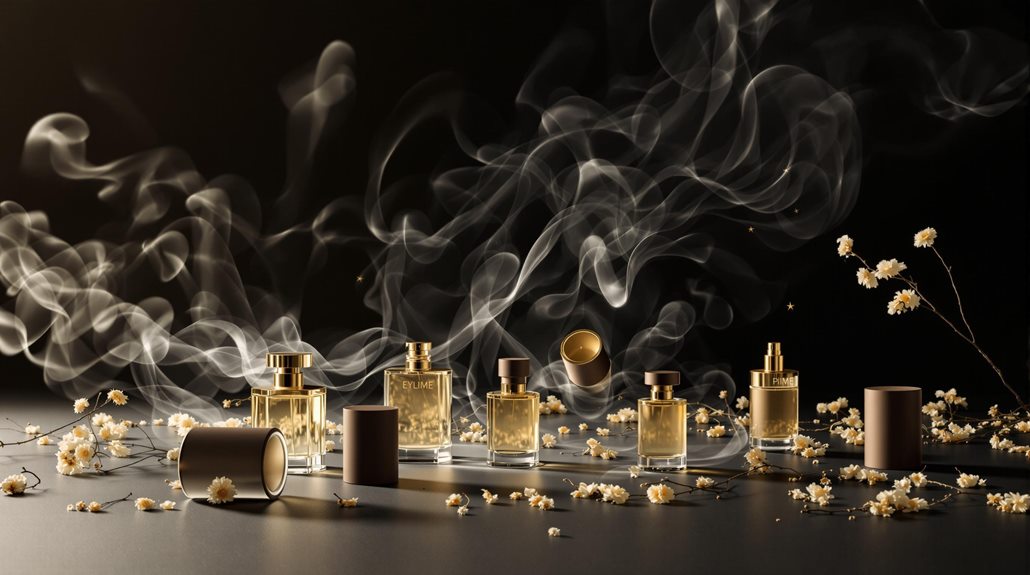
Recent years have witnessed a dramatic shift in the fragrance industry as direct-to-consumer brands disrupt traditional retail models. Companies like Scentbird, Skylar, and Phlur are transforming the market by offering personalized scent experiences at an affordable price point while maintaining premium quality.
You'll find these innovative brands leveraging technology to enhance customer engagement through sophisticated online platforms. They're using tools like Shopify and Klaviyo to create seamless shopping experiences, while platforms like Nosto help deliver personalized recommendations based on your preferences and browsing behavior.
What sets these brands apart is their commitment to transparency and sustainability. Many offer eco-friendly packaging options and provide detailed information about their ingredients and manufacturing processes. They're also revolutionizing fragrance investigation through subscription models and sampling programs, making it easier for you to sample new scents from home.
Through social media marketing, influencer partnerships, and targeted email campaigns, these brands are building strong communities around their products. They're proving that high-quality fragrances don't need traditional retail markups to succeed, and they're meeting growing consumer demands for personalization and digital-first shopping experiences.
Regional Market Distribution
Understanding global fragrance market distribution reveals distinct regional powerhouses and emerging players. When you look at market research data, you'll find the United States dominates the perfume market, generating a substantial $8,862 million in revenue during 2022. Meanwhile, China's projected annual growth rate of 6.33% positions it as a rapidly expanding market that's catching the attention of major perfume brands worldwide.
- United States leads with the highest revenue generation, shaping global market trends
- China shows exceptional growth potential, attracting international perfume brands
- United Arab Emirates maintains strong presence due to high per capita consumption
- Malaysia emerges as a key regional player with unique consumer preferences
- United Kingdom and Indonesia demonstrate steady market development
You'll notice how regional preferences and cultural influences create diverse market opportunities across different countries. The perfume market's distribution isn't just about sales figures - it's deeply rooted in local customs, economic conditions, and social factors. This complex interplay explains why certain regions show stronger affinity for specific fragrance types, creating distinct market segments that savvy brands can target for growth and expansion.
Price Segmentation Analysis
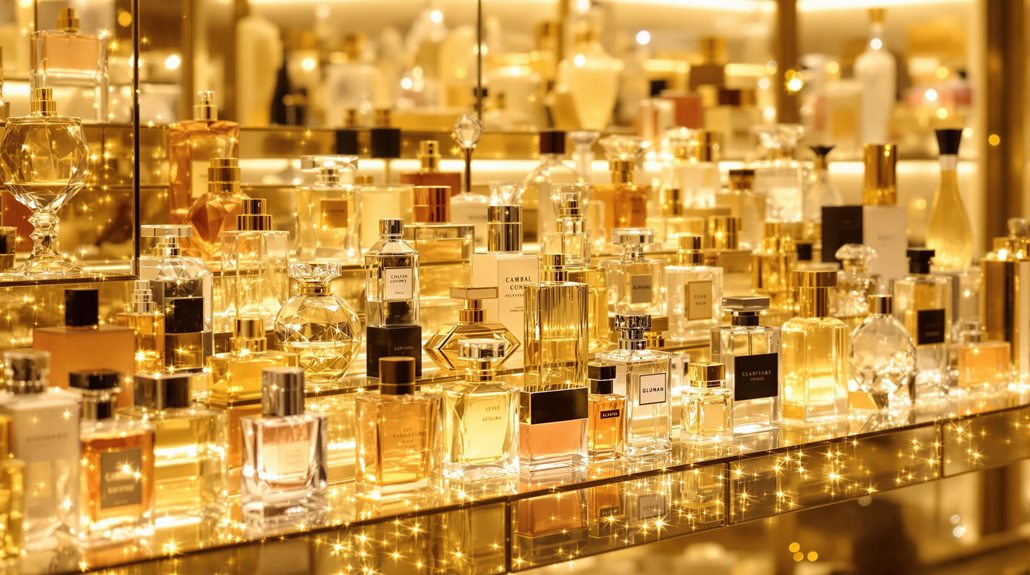
A clear divide exists across the perfume industry's price segments, with premium fragrances ($50-$100) commanding the largest market share at 40%. In this range, you'll find popular Eau de Parfum options from established brands that balance quality and accessibility. The mass-market segment, priced under $50, captures 30% of the market and typically includes Eau de Cologne varieties that appeal to budget-conscious and younger consumers.
The luxury perfume market is experiencing significant growth, projected to hit $15.6 billion by 2025 with a 6.5% CAGR. You'll notice this expansion particularly in the mid-range segment ($100-$200), which is currently the fastest-growing category as consumers invest more in personal grooming. At the highest end, niche perfume brands, priced above $100, are gaining traction among fragrance enthusiasts seeking exclusive scent experiences.
This price segmentation reflects shifting consumer preferences, with each tier serving distinct market needs. While premium fragrances dominate overall sales, the rapid growth in mid-range and niche segments suggests a transforming industry where consumers increasingly value uniqueness and quality over price considerations.
Top Revenue Generating Brands
While price segments shape market fluctuations, revenue figures reveal the industry's dominant players. You'll find that Estée Lauder leads the pack with an impressive $673.6 million in revenue for 2022, demonstrating its continued dominance in the global fragrance market. Following closely, Giorgio Armani and Burberry secure their positions with $585.3 million and $518.4 million respectively.
Notable performers in the market include:
- Versace, generating $465.6 million in annual revenue
- Calvin Klein, with $460 million representing 39% of their total business
- Hermès, achieving $450.8 million in fragrance sales
- Thierry Mugler, securing $438.7 million in revenue
- Givenchy, earning $421 million while expanding through Web3 strategies
You'll notice that luxury fashion houses dominate the top revenue spots, with many leveraging their established brand recognition to capture market share. The competitive scene shows that traditional luxury brands continue to maintain their stronghold, with companies like Calvin Klein deriving significant portions of their business from fragrance sales. These figures demonstrate the vigorous nature of the high-end fragrance market and its importance to luxury fashion conglomerates.
Boutique Versus Mass Market
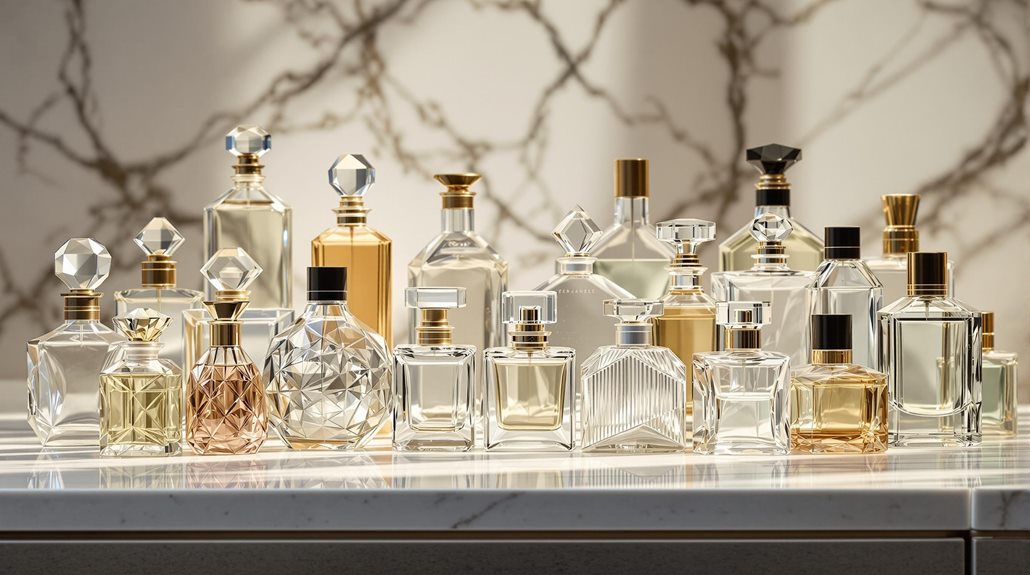
Deep contrasts shape the fragrance industry's terrain, where boutique and mass market brands pursue distinct strategies to capture consumer attention. When you investigate fine fragrances, you'll notice boutique brands concentrate on creating signature fragrances with unique, artisanal formulations made with natural ingredients. These niche producers prioritize craftsmanship and storytelling, often collaborating directly with perfumers to develop bespoke scents for discerning customers.
In contrast, mass market fragrance brands focus on broad appeal and accessibility. They typically maintain larger product portfolios and rely heavily on celebrity endorsements and widespread advertising campaigns to reach consumers. While boutique brands emphasize exclusivity and provenance, mainstream producers prioritize scalability and recognition.
The setting is changing, though, as direct-to-consumer brands bridge the gap between these two segments. They're leveraging technology and data analytics to deliver personalized scent experiences at more accessible price points. This shift has created a middle ground where you can find quality fragrances that combine elements of both boutique craftsmanship and mass market accessibility, challenging traditional industry divisions.
Digital Transformation in Perfumery
Digital innovations have revolutionized the perfume industry, fundamentally changing how consumers uncover, experience, and purchase fragrances. With just a free account, you'll gain full access to AI-powered scent profiling tools that match your preferences with your perfect fragrance. Take a look at how e-commerce platforms have transformed from simple online stores to sophisticated digital ecosystems, generating a combined revenue of USD billions annually.
- Virtual consultations replacing traditional in-store sampling
- AI-driven personalization engines recommending scents based on your preferences
- Social media influencers shaping fragrance trends and purchasing decisions
- Subscription boxes delivering curated scent experiences to your doorstep
- Digital scent profiling tools analyzing your preferences in real-time
The rise of direct-to-consumer brands has accelerated this digital transformation, with sustainability at its core. You're now able to blend personalized fragrances at home using digital guidance, while eco-friendly packaging and ingredients become industry standards. Social media platforms have become virtual fragrance counters, where you can uncover new scents through immersive content and authentic reviews. This digital revolution hasn't just changed how you shop for perfumes; it's revolutionized how you experience and connect with fragrances altogether.
Consumer Behavior and Demographics
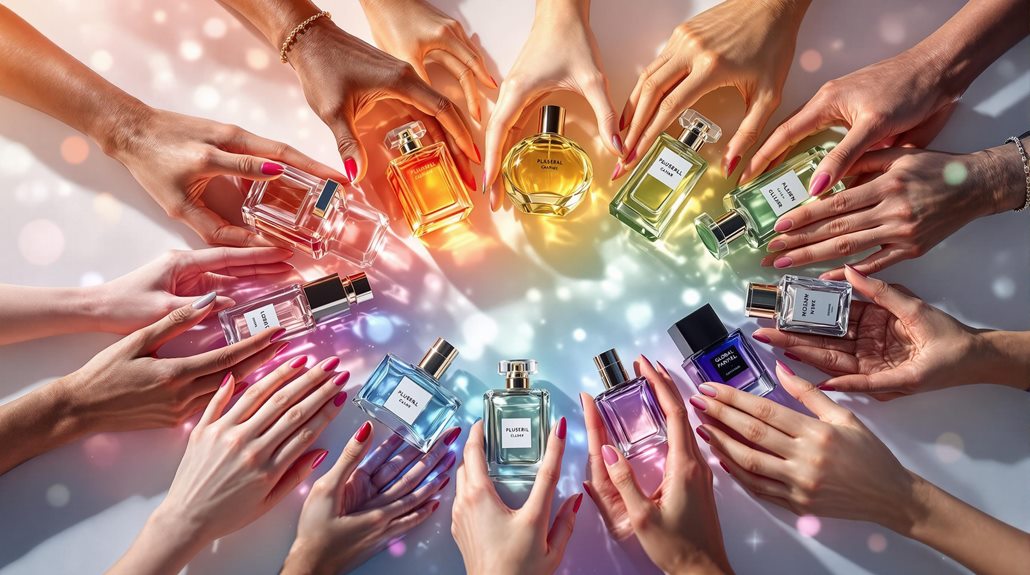
Consumer preferences in the fragrance market reveal distinct patterns across different demographic segments. You'll find that age plays a vital role, with younger generations like Millennials and Gen Z gravitating towards niche fragrances and sustainable options, including Jo Malone's natural-inspired collections and Tom Ford's exclusive lines.
Women continue to dominate fragrance purchases, particularly in eau de toilette and perfume oil categories, showing a strong preference for floral and fruity scents. Your income level tremendously influences your fragrance choices, with higher earners more likely to invest in luxury brands as status symbols and personal statements.
What's particularly interesting is how global demographics are reshaping the fragrance environment. If you're following market trends, you'll notice that emerging markets, especially China and the Middle East, are rapidly embracing Western fragrance brands while maintaining their unique cultural preferences. This shift has created exciting opportunities for both established and niche perfume houses. The Middle Eastern market, in particular, shows a strong affinity for concentrated perfume oils, influencing how global brands develop products for these regions.
Conclusion
You'll find it fascinating that the fragrance industry continues to expand, with thousands of brands competing globally. Whether you're drawn to luxury houses like Chanel and Dior or indie perfumers, there's a scent for every preference and budget. As digital platforms revolutionize how we shop for fragrances and new direct-to-consumer brands emerge, you're experiencing an unparalleled era of choice in the perfume world.

